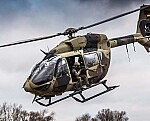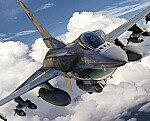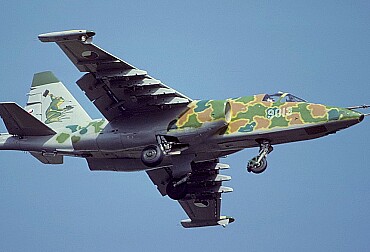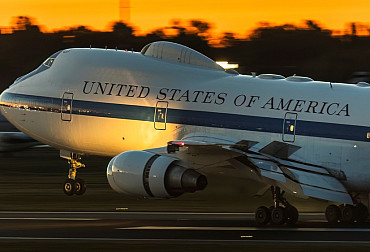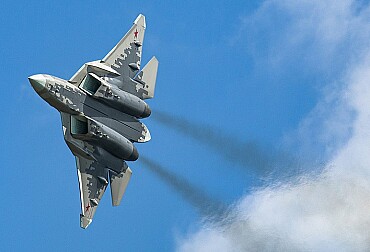Is the war in Ukraine the swan song of the reconnaissance and attack helicopter?
The rise of drones on the battlefield that we witness not only in Ukraine raises the question of the future of attack helicopters such as the French Army’s Tigers. In the French Army, the question of its successor is already being raised, even though it will only be arriving in around twenty years' time. The main question to be resolved is: should the armed forces still bet on a traditional attack helicopters? Do they actually have a future?

The Tiger attack helicopter will not be leaving the battlefield any time soon. It is in service since 2005, the machine should continue to fly until 2040 or 2045, according to the Minister for the Armed Forces, Sébastien Lecornu. Beyond that, there will be the question of renewing this army capability - because it is the army that deploys it. Similar questions are raised in virtually all Western armies. What does the future hold for attack helicopters in light of the rapid development of technology and tactics for deploying unmanned vehicles?
Although in France the post-Tiger era is still two decades away, the French Army needs to start thinking now about the technical and operational direction of the future helicopter. The first work on the Tiger began in the mid-1970s, thirty years before it made its debut in the army. On paper, it was taken for granted that the successor to this attack helicopter would also be an attack helicopter, operated by a crew of two soldiers. Except that the advent of drones, which are being used on a massive scale in the Ukrainian theatre, robotics and artificial intelligence is changing everything.
It is against this backdrop that Pierre Schill, Chief of Staff of the French Army, has publicly raised the issue of the future capabilities of light aviation. In a LinkedIn post written on 16 February, he explained that the question of the nature of the post-Tiger "arises" in the light of technological advances. He also points out that other armies around the world are asking the same question. Some have already made up their minds: Japan wants to replace its attack and reconnaissance helicopters with drones, and the United States has abandoned the Future Attack Reconnaissance Aircraft programme in view of the changing battlefield.
The battlefield in question is, of course, the war in Ukraine. The head of the French Army explains that "tactical lessons" are obviously being learned from this conflict, but that "not all of them have been learned or stabilised yet". New operational, tactical or even strategic surprises may arise. And in these matters, it is better not to make a mistake: "mistakes are paid for dearly, first and foremost by the taxpayer, but above all by operational efficiency, and therefore by the security of the nation," he wrote. There are also considerations of sovereignty and industry involved. The Tiger is built by Airbus Helicopters, for example.
When asked what choice France will make regarding its attack helicopter, the role of the crew, the role of robotisation and AI, the role of drones, etc., Pierre Schill does not provide an answer. The debate is ongoing, especially as there is the question of cost and the need to 'mass' in the event of a high-intensity conflict. This was another issue raised by Sébastien Lecornu at a hearing in February 2023: "The real issue is the technological leap. I have asked the Armed Forces to look at whether what is envisaged for Standard 3 of the Tiger really corresponds to what we want technologically," he explained to the members of the Senate. "Will we end up with a super helicopter that is already out of date due to the drones? I'm prepared to ask that question publicly," he added. "If the helicopter is great, but we can only buy a few, that will be a problem," he warned.
Launched in 2022, the modernisation project of the Tiger is to involve Safran, Thales and MBDA, as well as Airbus Helicopters. The stumble of Germany, which was initially a stakeholder in this project, has forced France and Spain to scale back their ambitions, despite the sums committed by these two countries. Paris is planning to invest 2.8 billion Euros to upgrade 42 of the 67 Tiger helicopters belonging to the French Army's Light Aviation Arm (ALAT) to the Mk3 standard, while Madrid has earmarked 1.18 billion Euros for 18 helicopters to be deployed by the Fuerzas Aeromobiles del Ejercito de Tierra (FAMET).
However, the question really is whether this programme will go ahead, particularly in the light of the feedback from the war in Ukraine, where Russian attack helicopters ran into problems. There are two opposing views. The Japanese Ministry of Defence considers selling off its AH-64D Apache, AH-1S Cobra and Kawazaki OH-1 attack and reconnaissance helicopters and replacing them with tactical UAVs. On the other hand, the British Army intends to keep its own AH-64E Guardians, with a view to adapting its tactics in the light of feedback from the war in Ukraine.
In detail, the French modernization programme follows the same logic. For the Mk3 standard it provided for the integration of the Strix NG sighting system, new navigation systems, the FlytX avionics suite, a self-protection system derived from the CATS-150, Micro TMA terminals for guiding air-to-ground missiles and UAVs, the TopOwl Digital Display helmet, etc. With this new standard, the Tiger was to be be fully connected within battlefield digitisation systems, with the ability to take control of UAVs and share tactical data in real time. In terms of weaponry, the Tiger Mk3 was to be fitted with the high-end missile Akeron LP.
Germany's withdrawal from the programme might also have influenceed the final French decision. It was decided to abandon the Mk3 standard in favour of a minimal modernisation of the Tiger, known as Mk2+. For the moment, the Tigers are gradually being upgraded to Mk2. This upgrade involves adding the ability to fire 68mm ACULEUS laser-guided rockets, a new GPS receiver and a TopShield controlled radiation pattern antenna. The last aircraft to be upgraded to this standard should be delivered before 2030. For the Mk2+ most of the work will focus on the avionics, the idea being that they should be common with those of the future Guépard Light Joint Helicopters. This means that the Tiger Mk2+ should feature Thales' FlytX suite. And especially the MUM-T (Manned-Unmanned Teaming) capability, which makes it possible to guide aerial drones.
Back in February, the US Army announced that it would be terminating the FARA (Future Attack Reconnaissance Aircraft) programme, which was officially launched in 2018 to replace some of the AH-64 Apache and OH-58D Kiowa Warrior helicopters, which have already been withdrawn from service. According to the US Army's specifications, this future reconnaissance and attack helicopter had to be able to fly at a speed of 200 knots (370 km/h), have a modular architecture to integrate new technologies and be able to operate UAVs. Finally, it had to be able to evolve in autonomous mode for missions in highly contested environments.
Two manufacturers were selected for this programme: Bell for the 360 Invictus and Sikorsky for the Raider X, based on the S-97 Raider. But, in the light of feedback from the war in Ukraine, the FARA no longer seems relevant to the US Army: "We are learning from the battlefield, particularly in Ukraine, that aerial reconnaissance has fundamentally changed. Sensors and weapons mounted on a variety of drones are more ubiquitous and less expensive than ever," said General Randy George, the US Army Chief of Staff.
Is the war in Ukraine the swan song of the reconnaissance and attack helicopter? There is a number of signs suggesting that it is. Slower in some countries, especially given budget constraints, faster in others – but the conclusion can be offered. Robotic and unmanned systems together with artificial intelligence are very likely to replace them.



